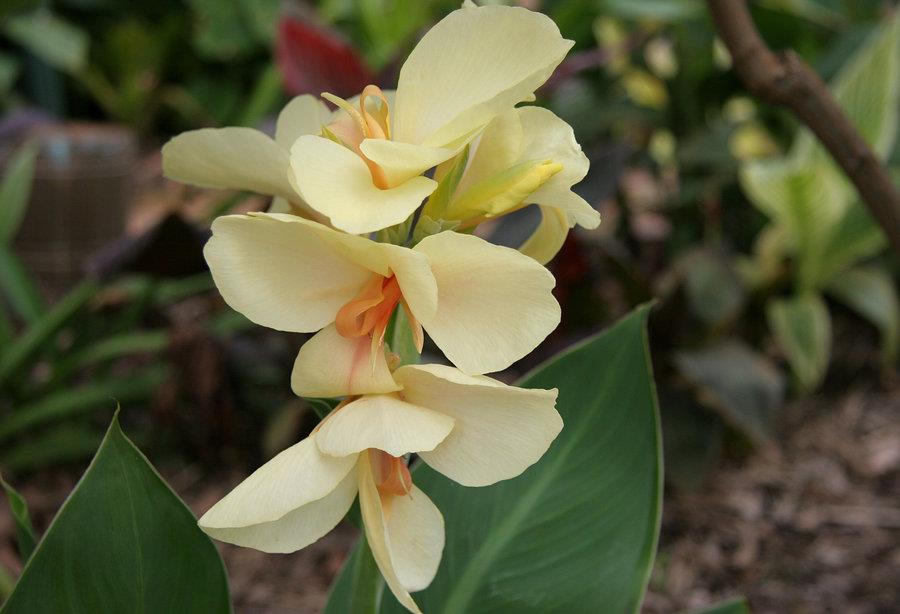Are you trying to grow beautiful Canna Lilies in your garden but wondering whether they will come back every year?
Read on to figure out if Canna Lilies are truly annual or perennial.
Table of Contents Show
Are Canna Lilies Annuals or Perennials?
Canna Lillies grow from rhizomes, underground stems that yield roots and shoots of a new plant.
So, you can pluck them before the winter and replant them the following spring when the weather gets warmer.
They would grow effectively as both perennial and annual, depending on the region you choose to grow them.
Canna Lillies are perennial flowering plants from Mexico, the Caribbean, and tropical South America.

The nativity to warm the tropical region makes Cannas tolerant to hot, humid conditions but less tolerant to cold climates.
With that said, these flowering plants can also grow as annuals when planted in selected regions with longer, colder months, usually USDA Zone 8 (10 to 15°F) or below.
Canna Lilies Based on Different Zones
Did you know there are Canna Lilies, with the dwarf species growing up to 3 feet and the largest species growing over 10 feet tall?
Canna Lilies grow as annuals in the cold climate and perennials in the warm zone.
| USDA Zone | Temperature Range | Canna Lilies Grow as |
|---|---|---|
| 3 to 7 | Min: 30-40°F Max: 0-10°F | Annual Plant |
| 8 to 11 | Min: 10-15°F Max: 40-50°F | Perennial Plant |
| 12 and above | Min: 50-60°F max: 70°F or above | Perennial Plant |
Annual or Perennial Canna Lilies: Which is Best to Grow?
The blooming or faltering Canna would entirely depend on the region’s hardiness zone, temperature, and sunlight duration.
For instance, both annual and Perennial Canna Lilies need the south-facing garden, receiving over 6 hours of sunlight daily.
Instead, let us look at how you can overcome challenges when growing Canna as either perennial or annual to get a sturdy, blooming plant.
1. Growing Canna Lilies as Perennials
Growing Canna Lillies is ideal if you live in a warm location with hardiness zones 8-11.
Cannas are avid spreaders; hence you should keep adequate spacing, at least 8-10 inches, during planting.
It is useful to amend the soil with rich hummus and organic compost to retain a slightly acidic pH level (6.0-6.5).
Also, you need to water weekly to keep the soil slightly moist throughout spring and summer but cut back to two or more weeks in fall and winter.
- Ensure the temperature stays above 60ºF or warmer around the year, and fertilize every month in spring and summer.
- Use organically rich potting mix containing equal parts compost, coconut coir or peat moss and perlite for potted plants.
- Deadhead flowers in summer to encourage new blooms and prune down to the next shoot when the flower spike fails to produce new buds.
- Clear the growing area free of debris, cuttings, and weeds to prevent plant disease.
2. Growing Canna Lilies as Annuals
Leaving the plants to overwinter in the garden may cause the annuals to die altogether.
So, they require plucking the rhizomes out of the soil and overwintering them throughout the colder months.
Uproot the rhizomes only when the foliage dies from the frost, usually in fall when it enters dormancy.
- Keep the rhizome to overwinter in a dry container inside a dark space with a temperature above 55ºF to prevent the risks of diseases and pests throughout mid-spring.
- Do not leave them in the ground or open area, as the risk of cold stress is always looming.
- Make your last fertilizer application about 6 weeks before you expect the first frost.
- Deadhead the blossoms in summer to encourage new growth and prune dead flower spikes before the first dormancy.
Wrapping Up
Canna Lilies grow as annuals in the cold hardiness zones (3-7) and as perennials in warm zones (8-11).
Growing Canna Lilies as perennials in a colder climate may require as much as 12 to 14 hours of artificial lighting to compensate for the insufficient sunlight.
Canna Lilies will undoubtedly bring joy to your garden by adding a pop of red, orange, and blood-red color through their showy blooms.
